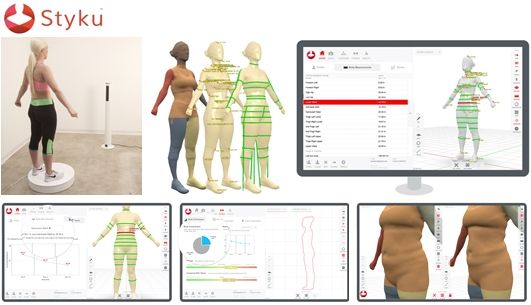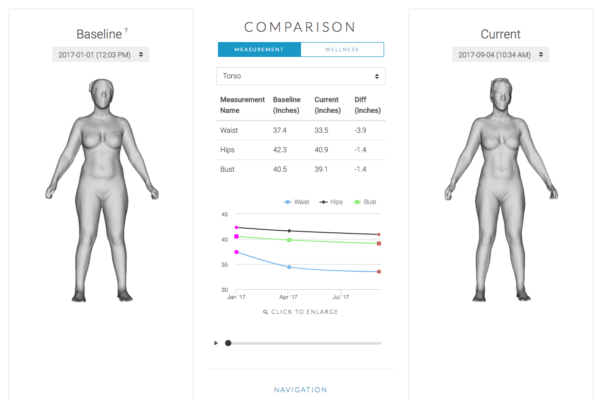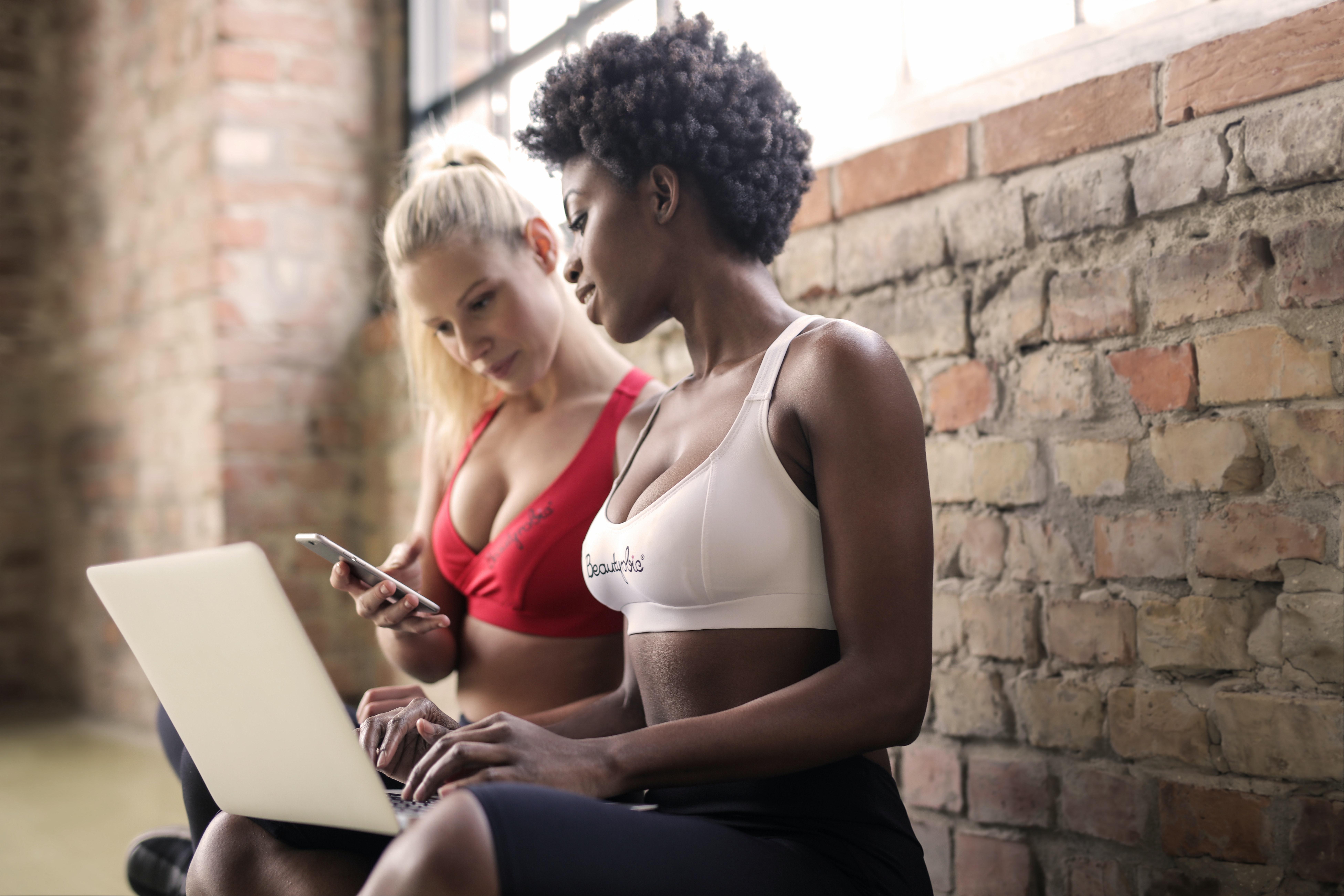Have you ever been frustrated at how little fitness apps and scales can tell you about your own incredible and unique body?
Online fitness trackers and weight scales can be confusing and discouraging when trying to reach personal fitness goals. They can be too general for the complexities of each individual body. In addition, a simple scale only tells you a general number instead of being able to tell you specifically where on your body you may have gained or lost weight.
That is why 3D body scanners like Styku and Fit3D have been revolutionary for the health and fitness industry.
While initially created for fashion designers to aid in measurements for the garments they were creating, 3D body scanning is now acknowledged as an incredibly useful device for fitness tracking in gyms across the nation.
.png?width=1280&name=Styku%20(1).png)
What is a 3D Body Scanner Anyway?
As the name suggests, a 3D body scanner will literally scan your body, often with infrared technology. It takes hundreds of photos and thousands of point locations in order to stitch them all together into a point cloud. After that, it makes a uniquely individual 3D model of your body.
In fitness areas specifically, this data is used to see exact measurements of an individual's waist, hip, thigh, arm, chest, and height. It also tracks specific weight and where that weight is located on each person's body.
These types of tests are more accurate than another popular test called the Bioelectrical Impedance Analysis (or BIA). A BIA test will measure the rate at which electrical currents run through the body and then use that rate to establish body composition and fat. This type of test can lead to unhelpful results, as natural factors such as water intake or food consumed before the test can affect the accuracy.
Styku vs. Fit3D
Two leading creators of 3D body scanners are Styku and Fit3D. To know the best 3D scanner to fit the needs of yourself, or your gym and its members, it is important to know your options.
Here is a breakdown of everything you need to know about Styku vs. Fit3D.

The Process: Styku
The Styku 3D body scanner is a non-invasive, infrared scanner that is able to produce a 3D image of your body in under a minute. Using 600 images, and millions of data points, the scanner produces an interactive image that enables each individual to track their own changes and fluctuations in their body. Results are then emailed to the individual for access to their scans at any time.
Fat loss can be digitally tracked specifically in the areas where it has occurred. This is incredibly useful in encouraging your clients with their progress. Sometimes fat loss isn't obvious and can be discouraging...with Styku the specific areas where the loss occurred is clear.
Body fat gains are predicted using artificial intelligence. With the information provided by the Styku scanner, the appropriate health decisions can be made based on the results each individual is looking for. Using daily deficits and expenditures, maximum calorie intake is estimated so that each client knows how much they can eat to attain their fat loss goals.
In addition to the body fat gain predictions, Styku scanners can also predict health risks based on your BMI, fat percentage, gender, and age group.
All these unique specifications allow for individuals and clients to have an incredibly personalized fitness goal that is attainable and trackable.
Styku 3D body scanners have been used in health clubs, for personal training, and for medical aesthetics and body contouring. Using the profile overlay tool, clients are able to see the precise amount of slimming that took effect since their last appointment.
Users of Styku have reported an incredible sense of empowerment and connection with their bodies that they could never achieve with scales and tape measures.
The Specs
Styku scanners are incredibly light and portable. The tower and platform combined only weigh 36 pounds. This enables freedom to adjust scanner locations, or to take one with you on the road to clinics!
Unlike the Fit3D scanner model, the Styku model has no handles to get in the way of scans. It also boasts a 99% measurement reliability.
The space required for each scanner setup is a minimum of 6 feet by 4.3 feet. For best results, the scanner should be set up in an area that is not near mirrors, has no direct sunlight, and has minimal lighting.
There are some great suggestions on how to best plan your gym space for your new scanner in this article.

The Process: Fit3D
Fit3D is similar to Styku in many ways. It also uses a non-invasive, infrared technology to deliver body measurement results in under a minute. The scanner takes 400 measurements for each individual who steps onto the platform.
This information is used to produce the 3D image used to show progress and highlight areas that need improvement. Additionally, health scores are developed based on body shape. These give insight into the proportions of body shape to fat and are useful in developing a plan of action for each individual's health goal.
Fit3D can also track balances and posture to help with injury prevention and overall health and wellness.
Not only that, but Fit3D can give insight into the Basal Metabolic Rate (also known as BMR) of an individual client. Basal Metabolic Rate is the number of calories that are burned in a state of rest. This can be useful if the client wants to focus on health and nutrition as opposed to a strict weight loss regimen.
Results are emailed to the client, where they can connect to a web portal that will allow them to access and control their data. Their data access includes an interactive dashboard for motivation and education.
A benefit of Fit3D is its app that can be downloaded by clients for easy access to all of their scan data.
A unique element of Fit3D is that it can be used by customers, without the help of a technician, to scan themselves and track their own health journey.
Those who use Fit3D body scanners report that they are much more accountable and inspired to pursue their health goals than they were before the 3D scan. The trainers at these locations and the clients have both also noted feelings of 'intrinsic motivation'.
The Specs
Perhaps the biggest difference between Fit3D and Styku is the weight of each scanner. Coming in at 193 lbs, the Fit3D is definitely not something that can be easily ported from location to location.
The structure of the Fit3D scanner requires a slightly smaller amount of space than the Styku model, needing 6 feet by 3 feet as opposed to 6 feet by 4.3 feet. Another difference is that the tower and the base of the Fit3D model come attached, along with two handles on either side to assist in balance.
The tablet needed to process the information that comes in from the self-calibrating turntable is included.
Overall
The Styku and Fit3D body scanners are similar in their processing of body measurements, and the unique information they are able to provide. The biggest differences come in the access of the data (app vs. email) and the technical specs of each scanner.
The Styku model seems to be the best body scanner for those who would like to travel with their scanner to wellness events or challenges. The Fit3D model, on the other hand, cannot be easily moved.
The main benefit of the Fit3D is its interactive app, where clients can access their own data at any time.
Both Styku and Fit3D scanners provide very detailed descriptions of body sizes, weights, and measurements. They are both very quick and easy to use, giving detailed insights into each client's body within a matter of minutes.

What Will you Choose?
This article has outlined the ins and outs of Styku vs. Fit3D: two very well-known 3D body scanners on the market. This will allow you to be more equipped to make an educated decision on the best fit for your gym or your own personal use.
Not only do 3D body scanners help in bringing revenue to your gym, but they also have been revolutionary for health and wellness advocates throughout the nation. Will you revolutionize the way you track your own health data? Find a Styku scanning location at a gym near you, to see the 3D scanner in action!
Check out more information on our site here, where we would love to answer any questions you might have on our products.
If you enjoyed this blog post, you might enjoy our other articles!






